Introduction
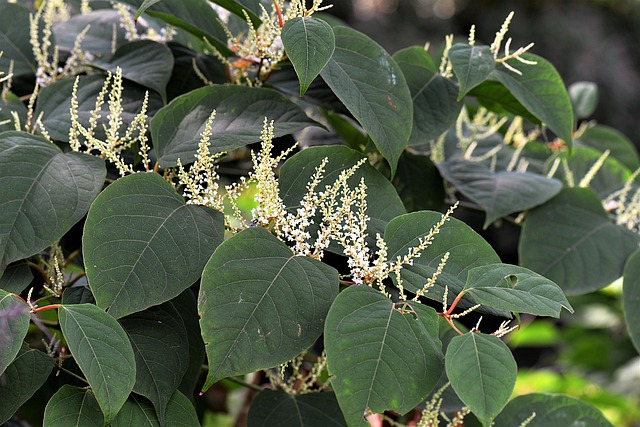
Japanese Knotweed are invasive non native plants that has been causing havoc in the United Kingdom for decades. Its relentless growth, destructive nature, and resilience have earned it the title of one of the most troublesome plants in the United Kingdom (UK).
In this ‘Japanese Knotweed in UK’ article we will explore the various aspects of Japanese Knotweed including its impact on the environment, economy, property, and infrastructure in the UK.
We will also delve into the identification and characteristics of the plant, the legal implications associated with it, and highlight the management and control methods available.
Why is Japanese Knotweed so bad in the UK?
Japanese Knotweed originates from East Asia.
The scientific Latin name for it is Reynoutria japonica, but you can also find it referred to as Fallopia japonica.

It was first introduced to the UK at London’s kew gardens in the mid-19th century as an ornamental plant due to its attractive appearance.
The invasive species was soon sold to private gardens, planted by railways and used in industrial settings.
However, what initially seemed like a beautiful and practical addition quickly turned into a nightmare due to its aggressive growth and destructive nature. Today, it is considered one of the most invasive plant species in the UK, causing significant damage to buildings, roads, and natural habitats.
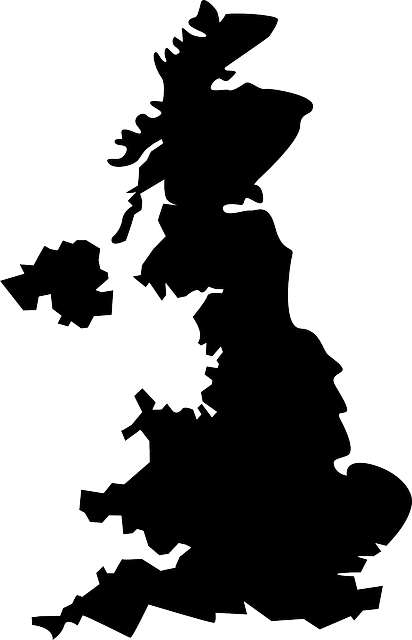
Its presence is not limited to a specific geographical region, making it a nationwide problem.
Japanese Knotweed thrives in a variety of habitats and is often found along riverbanks and streams, railway embankments and cuttings, roadsides, soil tips, and in urban areas.
Japanese Knotweed Infestation
The underground root systems (called rhizomes) can extend up to 7 meters from the parent. These rhizomes can penetrate through concrete, tarmac, and even building foundations, causing structural damage and reducing property values. The dense foliage shades out native vegetation, leading to a decline in biodiversity.
It has the ability to spread very rapidly.
Whilst it rarely seeds in Britain, it can grow in one of two ways.
-
Small rhizome fragments quickly take root and give rise to a new infestation.
-
Direct root (rhizome) growth
The management and control of Japanese Knotweed in urban areas can be particularly challenging. The plant’s ability to thrive in various soil types and withstand harsh environmental conditions makes it difficult to eradicate completely.
It spreads rapidly and quickly the plant’s large leaves block sunlight, preventing the growth of other native plants beneath it.
One particular concern is the impact of Japanese Knotweed on wildlife habitats. It disrupts the natural balance of ecosystems, affecting the availability of food and shelter for various animal species. This can result in a decline in biodiversity, with potentially severe consequences for the overall health of the environment.
The spread of Japanese Knotweed is not limited to the UK alone. It has become a global issue, invading various countries across Europe, North America, and Australia.
Damage To Property and Infrastucture
Japanese Knotweed has also been known to cause damage to infrastructure, including buildings, roads, and flood defences. Its strong and extensive root system can penetrate through cracks in concrete and asphalt, leading to costly repairs.
Its destructive nature has led some mortgage lenders to refuse loans on properties infested with Japanese Knotweed
Japanese Knotweed can cause structural damage to buildings, walls, tarmac, patios, and paths due to its aggressive growth. Its rhizomes can penetrate through cracks and weaknesses in structures, leading to costly repairs.
Its presence near the built environment requires careful monitoring and management to prevent any potential damage.
In some cases, the impact of Japanese Knotweed on property and infrastructure goes beyond physical damage. The presence of this plant can also result in legal issues and insurance complications.
The property affected may find it difficult to secure insurance coverage or face higher premiums due to the perceived risk associated with Japanese Knotweed infestations.

This can further exacerbate the financial burden on affected individuals and communities.
Selling An Affected Property
Property values can be affected by Japanese Knotweed, as prospective buyers are often deterred by its presence. Knotweed will make it more difficult to sell an affected property.

Mortgage lenders are also cautious when it comes to properties infested with Japanese Knotweed, complicating the buying and selling process.
Furthermore, the costs associated with managing and eradicating Japanese Knotweed can be substantial. Property owners and land managers may need to invest in professional removal services, which can be both time-consuming and expensive.
In some cases, its presence can even result in legal disputes between neighbouring property owners.
The TA6 form, a property information form used in UK conveyancing, requires the seller to indicate on the form whether Japanese knotweed is present on their property.
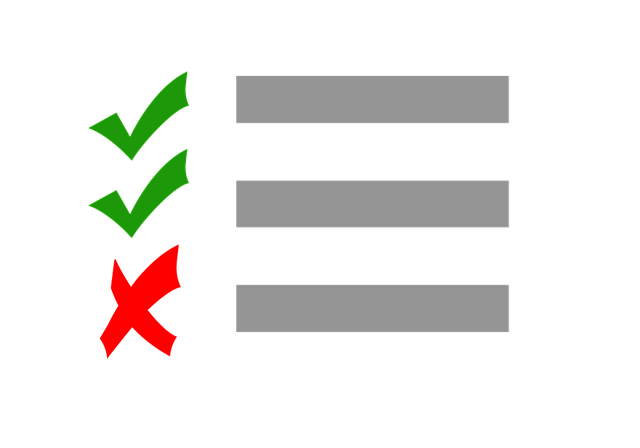
Homebuyers can choose to commission a specialist Japanese knotweed survey in areas with a high concentration of knotweed sightings to determine whether the property they intend to purchase will be impacted by or at risk of invasion from surrounding infestations.
Addressing the issue promptly and effectively is essential for property owners and land developers.
Legal Implications of Japanese Knotweed in the UK
Legally, unless it is causing a nuisance, you are not required to get rid of Japanese knotweed from your property. However, it is unlawful to encourage Japanese knotweed to grow in the wild, as stated in the Wildlife and Countryside Act of 1981’s Schedule 9.
Therefore, landowners and occupiers have a legal responsibility to prevent its spread and take necessary measures for control. This responsibility extends not only to the owner of the land but also to anyone who has control over the land, such as tenants or land developers.
You must not sell soil polluted with Japanese knotweed as topsoil or dispose of Japanese knotweed with other surplus soil.
Fines and Penalties

Penalties for non-compliance with laws regarding Japanese Knotweed can be severe. The authorities take this issue seriously due to the potential ecological and economic impact of the plant.
Fines and legal action can be imposed on individuals or organizations found guilty of allowing the plant to spread into the wild or failing to control its growth on their properties.

Contact the Environment Agency if you see any fly-tipping that includes Japanese Knotweed.
What does UK Japanese Knotweed Look Like?
Recognizing and understanding the characteristics of Japanese Knotweed is crucial for effective management and control. We will take a detailed journey through the year to better identify it.
Japanese Knotweed may spread quickly thanks to this underground network of interwoven rhizomes.
How to identify Japanese Knotweed in Spring
In early spring the plant has reddish-purple asparagus-like shoots between 0 to 20cm emerging from the ground, with rolled up leaves tinged with pinkish-red tips.
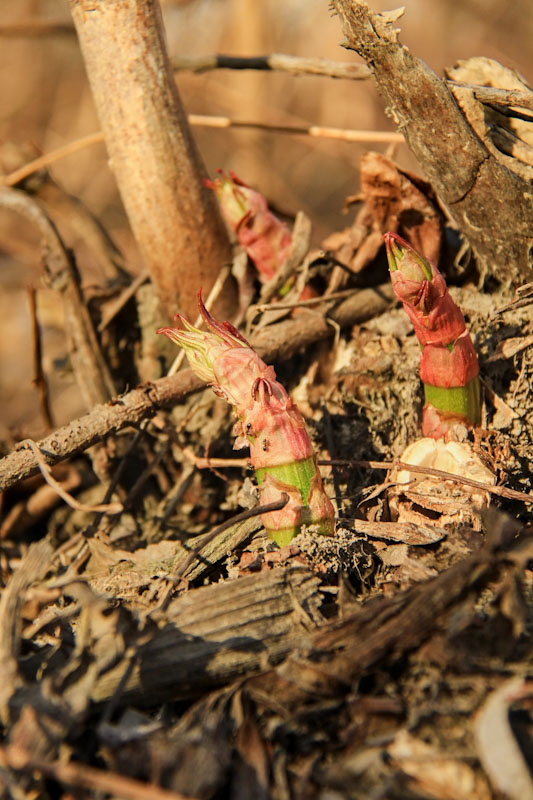
The shoots or stems may appear from a bed of last years desiccated plant debris (see description below).
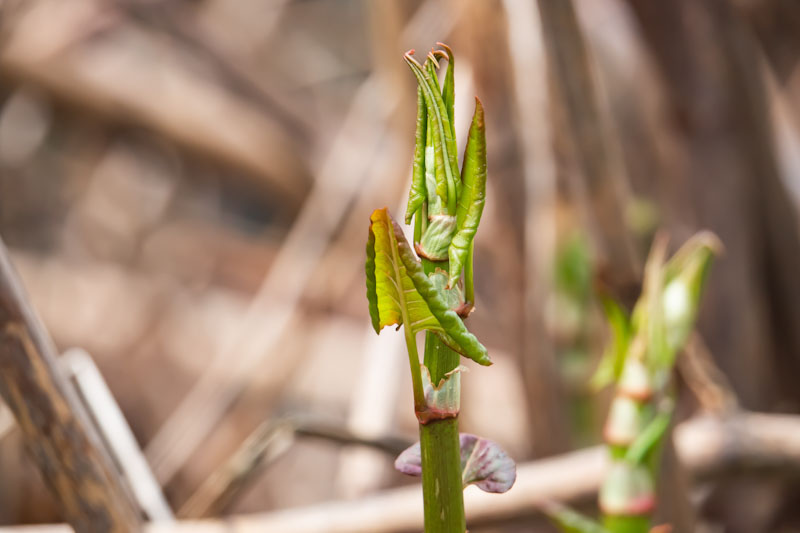
The leaves will unfold from the tips.
By late spring, new plant growth will have reached between 20cm (8 inches) and 2.1m (7ft). The stems have taken on a green colour.
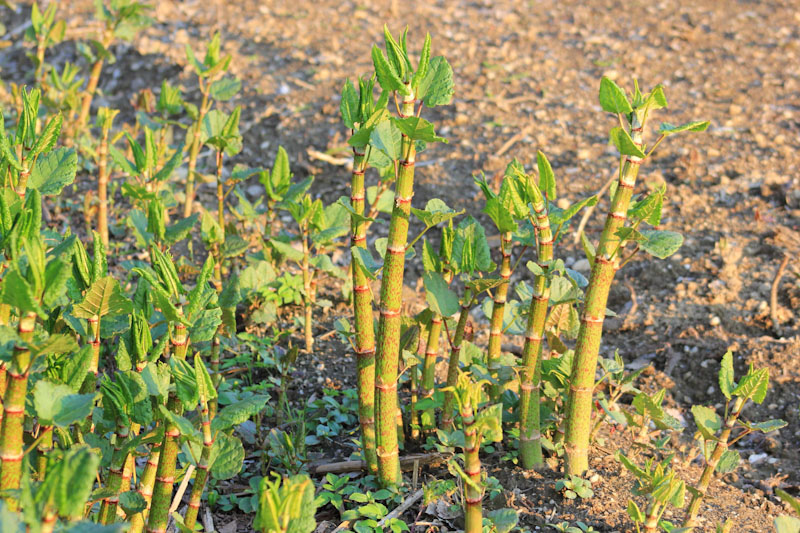
The stems resemble bamboo. They can grow 10cm (4 inches) in a day.
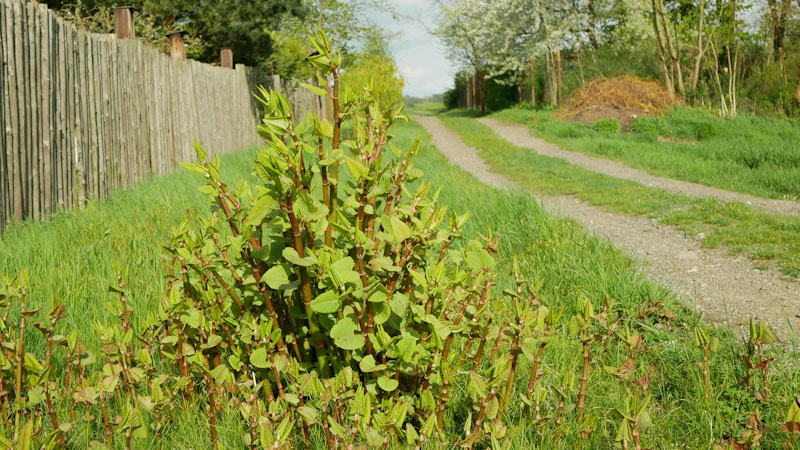
The fact that it is a strong clump forming perennial, will soon become very apparent.
Identify Japanese Knotweed During Summer
Its hollow stems are bamboo-like in appearance, speckled with reddish-brown marks. These stems can reach heights of up to 10 feet (3 meters) and are capable of growing rapidly, sometimes up to 4 inches (10 centimeters) per day.
The leaves are broad and heart-shaped, arranged in a zig-zag pattern along the stem. They are typically dark green in color and have a smooth texture.
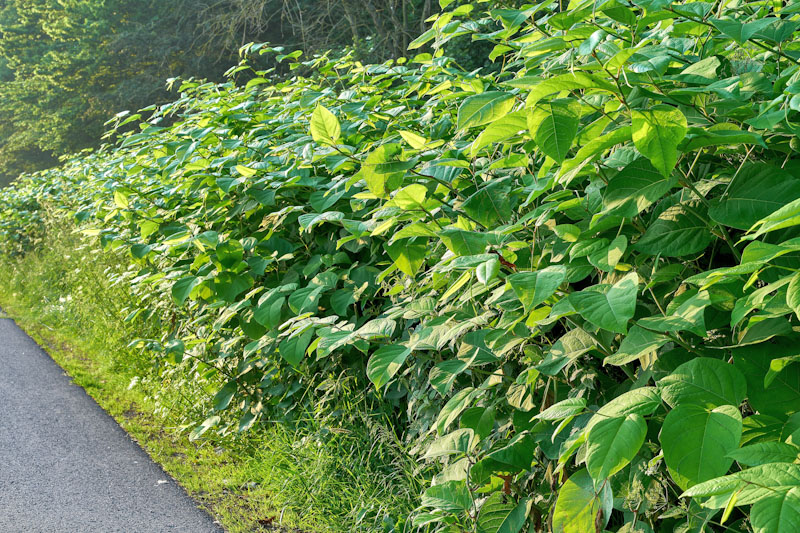
Throughout the summer, Japanese Knotweed continues to grow vigorously, overshadowing and outcompeting native plant species. The new plants develop into dense stands. These can form impenetrable thickets.
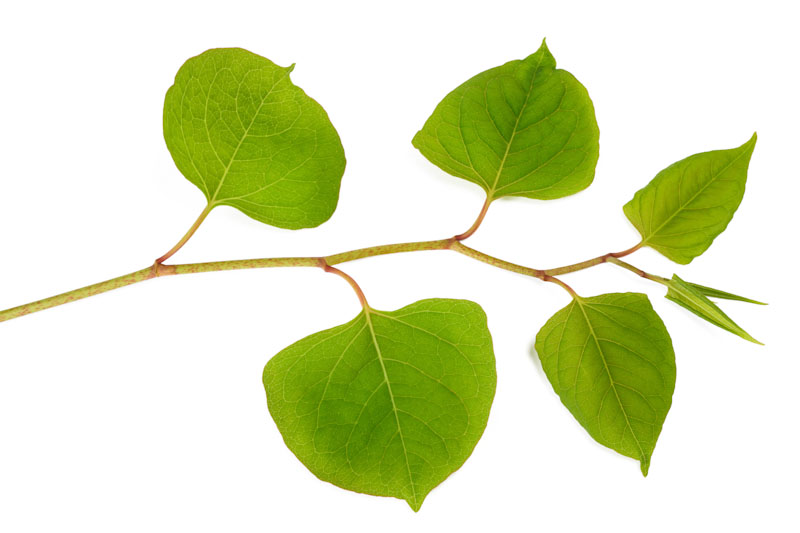
A distinctive feature of knotweed is its leaf pattern. Japan knotweed leaves have a shovel-shape with leaves that grow in alternate progression along the stem. Each leaf can be up to 14cm (5½in) in length.
During summer Japanese knotweed grows into a dense and large canopy.
Japanese knotweed plants can be between 2.1m (7ft) and 3m (9.8ft) high.
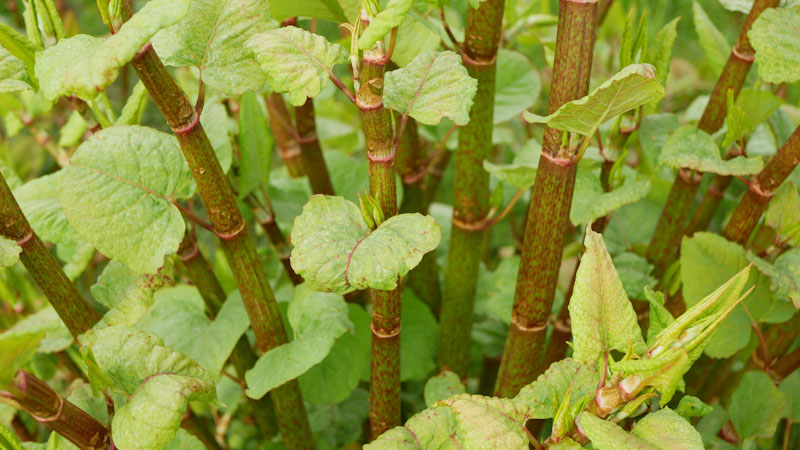
Japanese knotweed canes have nodes, with pronounced dark purple speckling.
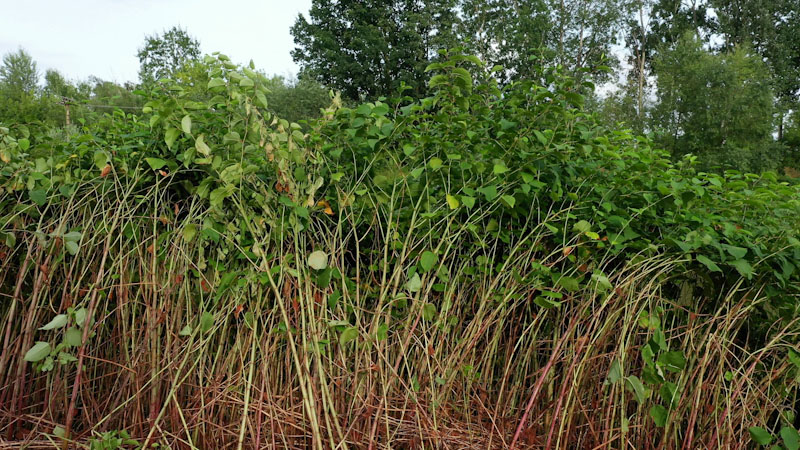
A dense Japanese knotweed canopy.
Identifying The Flowering Plant In Late Summer
Japanese Knotweeds flower in Britain from June until September.
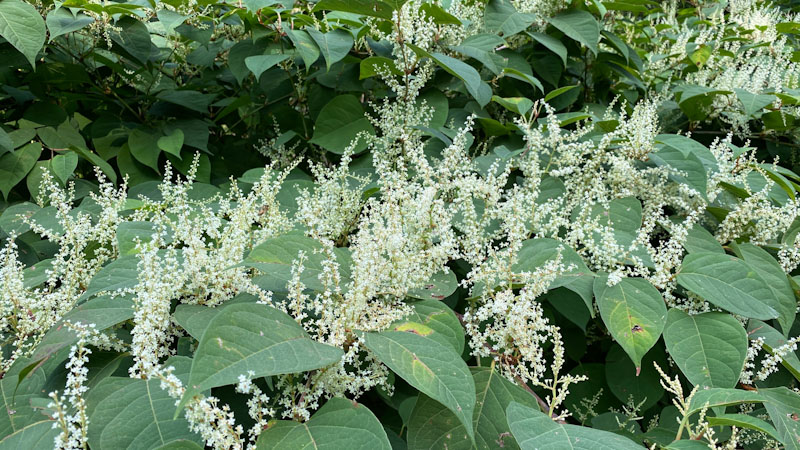
The creamy-white flower tassels, can reach up to 15cm (6in) in length.
Identify The Plant In Autumn
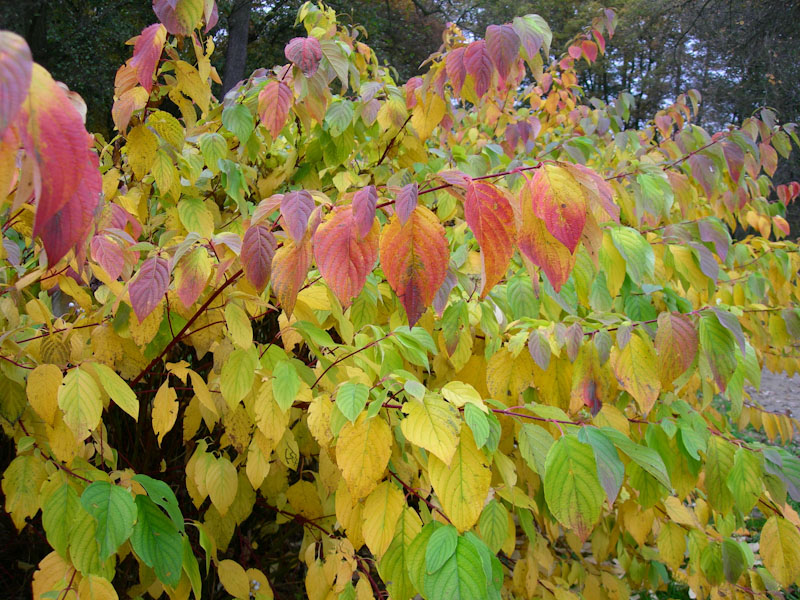
During the autumn Japanese knotweed leaves turn yellow or yellow edged.
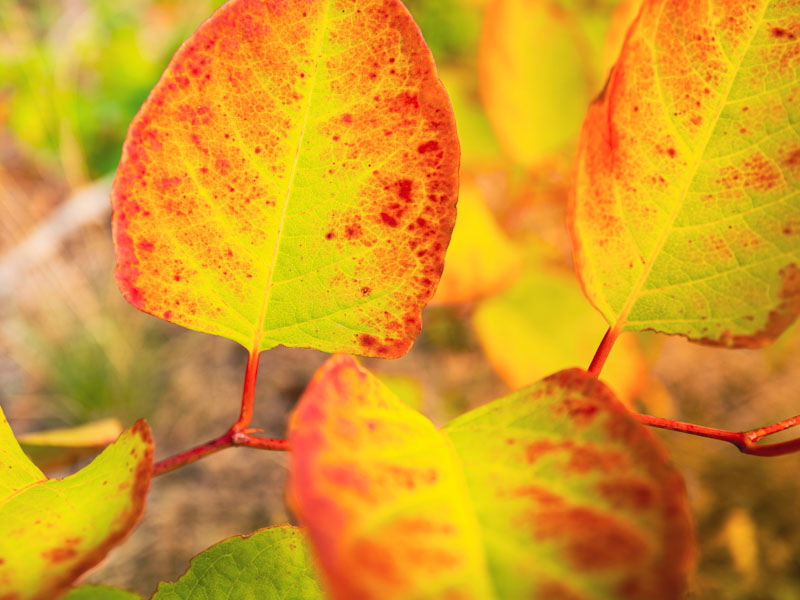
Japanese Knotweed Canes in Winter
As the days grow shorter and cooler, Japanese Knotweed prepares for its annual cycle of dormancy.
The yellowy orange leaves will over time turn brown.
Soon the leaves will fall the dense annual stems become more visible.
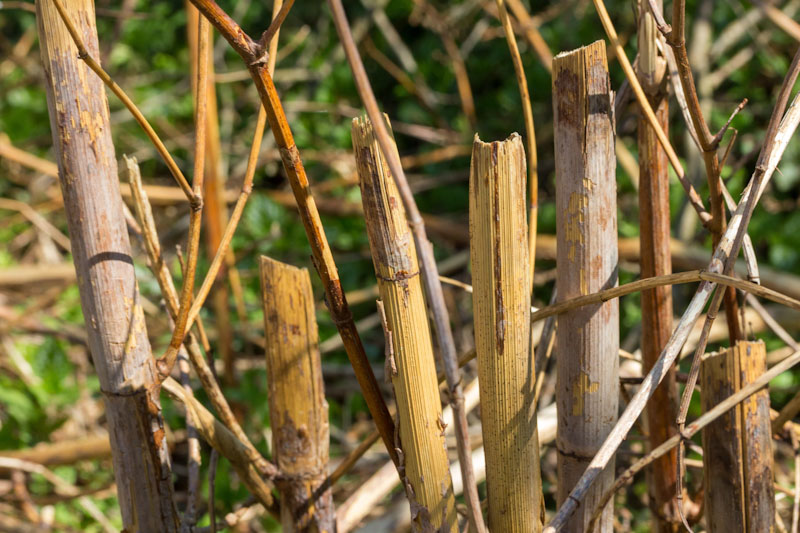
The canes desiccate and break in wind, covering the ground with debris.
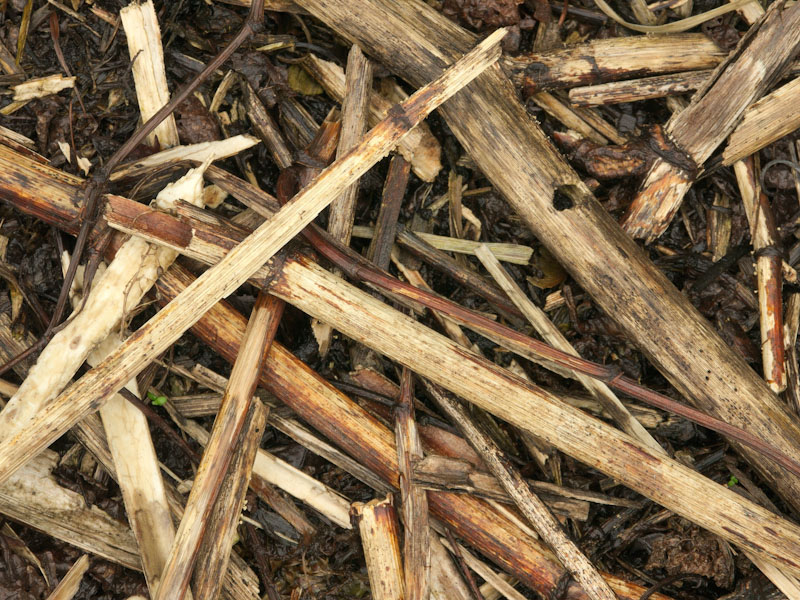
However, despite its apparent disappearance, the rhizomes below the surface are still active and prepared to produce new shoots in the spring.
By targeting the plant during its active growth periods and employing appropriate control methods, it is possible to mitigate the negative impacts of this invasive species.
How to Remove Japanese Knotweed
Dealing with Japanese Knotweed requires a proactive approach to prevent further spread and protect the environment and infrastructure.
Native plant species should be re-established when Japanese Knotweed removal has been completed. This will lessen soil erosion and help bio diversity.
Professional Help
Seeking professional advice and assistance from qualified experts in the field is highly recommended.

Choose a contractor who possesses the necessary certifications and registrations:
- Amenity Forum Membership
- BASIS Professional Register
- BASIS Amenity Training Register
- BASIS Nominated Storekeeper (NSK) Professional Register
These professionals have the knowledge and expertise to assess the extent of the infestation, and determine the most appropriate course of action to safely eradicate the plant and prevent regrowth.
They follow strict protocols to ensure the safe disposal of the plant material, minimizing the risk of accidental spread.
Herbicides
Herbicide treatment is one of the most common methods used by professionals. It involves the application of specific herbicides that target the plant’s rhizomes, effectively killing the plant and preventing regrowth. This method requires multiple treatments over several years to ensure complete eradication.
It typically takes between 3-4 years to kill Japanese knotweed with weed killer agents. However the professional contractor may be able to use stronger weedkilling agents that cut the period to half. The cost of weed removal differs according to the area affected and how many treatments you choose.
Excavation
In cases where the infestation is severe or the site needs to be cleared quickly, excavation may be necessary. This involves the physical removal of the plant and its rhizomes, which are then disposed of in a licensed landfill facility. Excavation can be a more costly and disruptive method but provides immediate results.
DIY Knotweed Control Methods
For those who prefer a hands-on approach, there are DIY methods available for managing Japanese Knotweed. However, it is vital to follow best practices and guidelines to ensure proper control and prevent accidental spread.
Weed Killer Control
Only authorised herbicides may be applied.
One common DIY method is the use of glyphosate-based herbicides. These herbicides are readily available in garden centres and can be effective in controlling small infestations. However, it is essential to carefully follow the instructions provided to minimize the risk to your health.
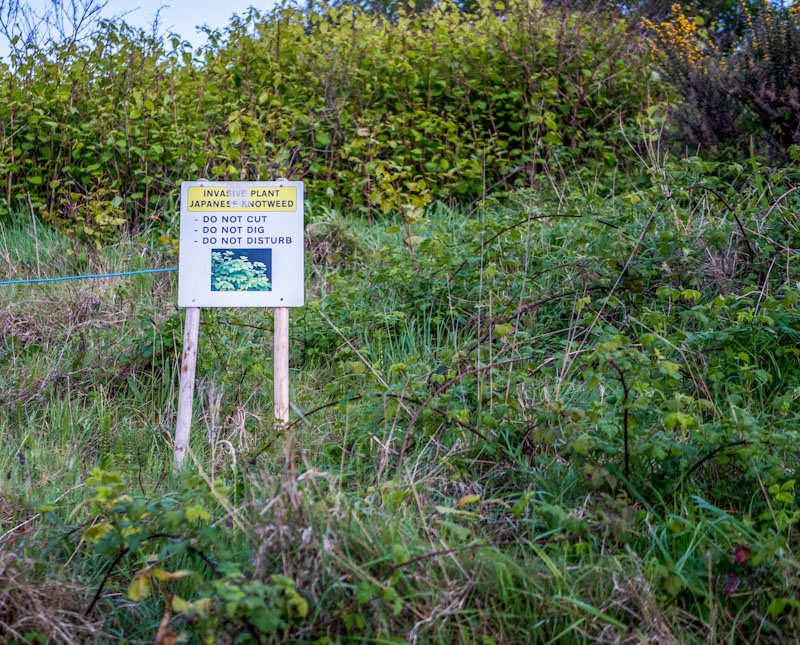
Keep people away from infestations that are being treated.
You may need to obtain authorisation from Natural England if the area is protected, such as locations of special scientific significance, and obtain authorization from the Environment Agency if the plants are close to water
Excavation
Another DIY approach is the physical removal of the plant. This method involves cutting the stems close to the ground and digging out the rhizomes. Remember, it only takes small rhizome fragments (as little as 1cm) to remain behind to contaminate the soil, and the plant can regrow.
The rhizome of knotweed can lie dormant in the ground for many years but, if disturbed or moved, the rhizome can re-grow.
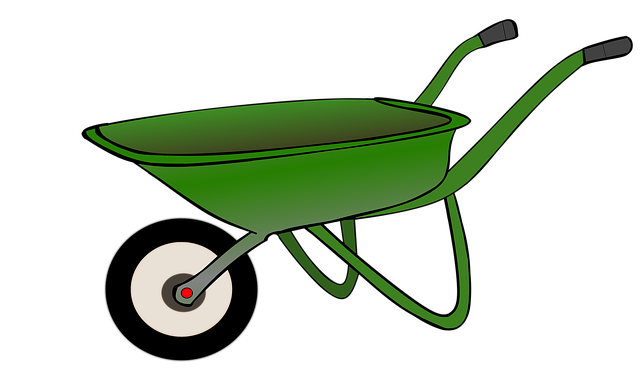
According to the Environmental Protection Act of 1990, Japanese knotweed is “controlled waste.” This must be disposed of in authorised landfill locations to prevent regrowth and accidental spread.
Burning or composting the plant material is not recommended, as it can survive and continue to spread.
If you have more inquiries regarding how to manage waste containing Japanese knotweed, you can seek assistance from the Environment Agency.
It is worth noting that DIY methods may not be suitable for large-scale or persistent infestations. In such cases, seeking professional assistance is highly recommended to ensure effective control and prevent further spread.
To Sum Up
The presence of these invasive plants in the UK poses significant challenges to the environment, economy, property owners, and infrastructure.
Dealing with Japanese Knotweed requires a proactive approach to prevent further spread and protect the environment and infrastructure.
Understanding its characteristics, legal implications, and available management methods is crucial in effectively mitigating the impact of this invasive plant.
By staying informed and taking necessary actions, we can help protect our environment and preserve the beauty and integrity of the UK’s landscapes.
Additional Reading
Understanding Tree Root Damage to Property
See more Helpful Content
Visit our Homepage
